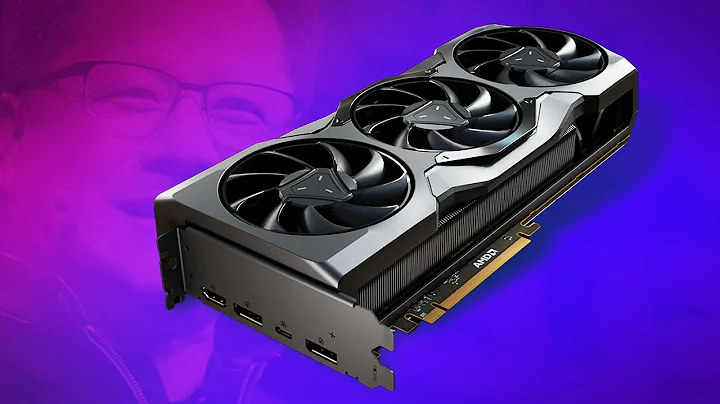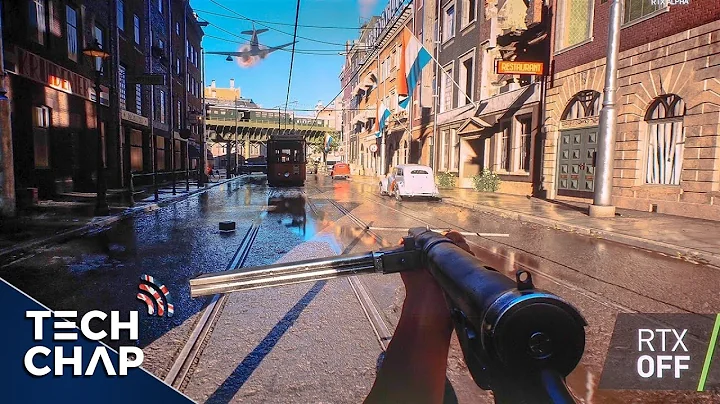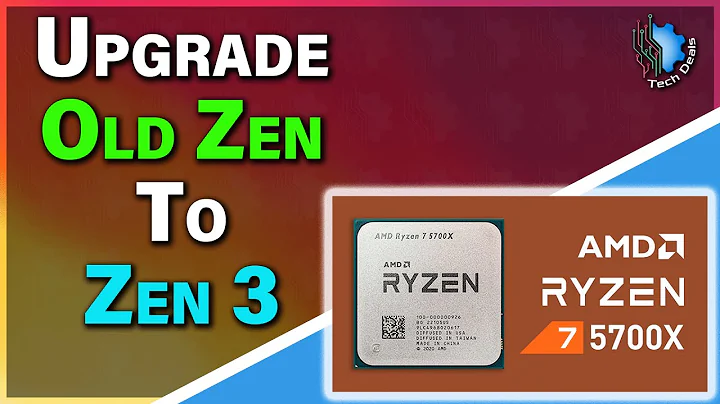Maximize FPS in Gaming with AMD Graphics Card Settings
Table of Contents
- Introduction
- Understanding Screen Resolution and Refresh Rate
- Importance of FPS in Gaming
- Factors Affecting FPS
- Adjusting Display Settings for AMD Graphics Cards
- Installing the AMD Driver
- Accessing the Graphics Settings
- Performance Mode
- Delay Prevention and Motion Base Enhancements
- Radeon™ Image Sharpening
- Radeon™ Anti-Lag
- Radeon™ Chill
- Radeon™ Boost
- Radeon™ Freesync
- Advanced Graphics Settings
- Triple Buffering
- Morphological Anti-Aliasing
- Texture Filtering Quality
- Tessellation Mode
- Anisotropic Filtering
- V-Sync and Enhanced Sync
- Optimizing Performance for Competitive Gaming
- Frame Rate Target Control
- Frame Rate Enhancer
- Surface Format Optimization
- Color Depth Control
- Customizing Fan Settings
- Overclocking the Graphics Card
- Conclusion
Adjusting AMD Graphics Card Settings for Maximum FPS
In the world of gaming, having a high FPS (frames per Second) is crucial for a smooth and immersive experience. For AMD graphics card users, there are several settings that can be optimized to achieve the highest possible FPS. In this article, we will guide you through the process of adjusting the display settings for AMD graphics cards to maximize your FPS.
1. Introduction
Before we dive into the settings, it is important to understand the significance of FPS in gaming. FPS refers to the number of frames or images that are displayed on your screen per second. Higher FPS results in smoother gameplay and reduces input lag, enhancing the overall gaming experience.
2. Understanding Screen Resolution and Refresh Rate
Screen resolution and refresh rate play a crucial role in determining the maximum FPS your graphics card can achieve. Screen resolution refers to the number of pixels on your display, while refresh rate refers to the number of times the display refreshes per second. It is essential to consider the capabilities of your monitor when adjusting your graphics card settings for FPS optimization.
3. Importance of FPS in Gaming
A higher FPS not only enhances the visual experience but also provides a competitive advantage in fast-paced games. The increased responsiveness and smoother transitions allow for quicker reactions and improved accuracy. However, it is essential to find a balance between FPS and visual quality, as extreme FPS optimization may result in a decrease in graphical fidelity.
4. Factors Affecting FPS
Several factors can affect the FPS you achieve in games, including the complexity of the game, the hardware specifications of your system, and the graphics settings you choose. While optimizing your AMD graphics card settings can significantly improve FPS, it is also essential to consider upgrading other components of your system if necessary.
5. Adjusting Display Settings for AMD Graphics Cards
To begin optimizing your AMD graphics card settings, follow these steps:
5.1 Installing the AMD Driver
Before adjusting the settings, ensure that you have the latest AMD driver installed. Visit the official AMD website to download and install the appropriate driver for your graphics card.
5.2 Accessing the Graphics Settings
Once the driver is installed, right-click on your desktop and select "Graphics Settings" from the dropdown menu. This will open the AMD Radeon Software interface, where you can make the necessary adjustments.
5.3 Performance Mode
The first setting to adjust is the Performance Mode. Set it to "Graphics" or "Gaming" mode to prioritize performance over visual quality. This will ensure that your graphics card is delivering maximum FPS.
5.4 Delay Prevention and Motion Base Enhancements
Enable the "Anti-Lag" and "Chill" features for reduced input lag and smoother gameplay. Additionally, consider enabling the "Radeon Boost" feature for improved performance during fast-paced moments in the game.
5.5 Radeon™ Image Sharpening
Radeon Image Sharpening enhances the Clarity and details of in-Game visuals. Experiment with different levels of sharpness to find the balance between image quality and performance.
5.6 Radeon™ Anti-Lag
Radeon Anti-Lag reduces input lag by optimizing how the GPU handles frame buffering. Enable this feature for improved responsiveness, especially in competitive gaming scenarios.
5.7 Radeon™ Chill
Radeon Chill dynamically regulates the frame rate to reduce GPU power consumption and heat generation. Consider enabling this feature if you are experiencing high temperatures or want to save power.
5.8 Radeon™ Boost
Radeon Boost dynamically adjusts the resolution to provide higher FPS during fast movements in the game. This feature can be particularly useful in games with quick camera rotations or high-speed actions.
5.9 Radeon™ Freesync
If your monitor supports Freesync technology, enable it to synchronize the refresh rate of your monitor with the FPS output of your graphics card. This eliminates screen tearing and provides a smoother gaming experience.
6. Advanced Graphics Settings
Beyond the basic settings, there are several advanced options that can further enhance your gaming experience. These settings may vary depending on your AMD graphics card model.
6.1 Triple Buffering
Enable triple buffering to reduce input lag and smoothen out frame transitions. This can improve FPS stability, particularly in games with frequent frame rate fluctuations.
6.2 Morphological Anti-Aliasing
Morphological Anti-Aliasing (MLAA) smooths jagged edges in games without the need for traditional anti-aliasing methods. Experiment with different levels to find the balance between image quality and performance.
6.3 Texture Filtering Quality
Texture filtering quality determines the sharpness and clarity of textures in games. Adjust this setting according to your preference, balancing visual fidelity with performance.
6.4 Tessellation Mode
Tessellation improves the detail and depth of objects in games. Choose an appropriate tessellation mode based on your graphics card's capabilities and the performance impact it has on your FPS.
6.5 Anisotropic Filtering
Anisotropic filtering enhances the clarity of textures viewed at oblique angles. Adjust this setting according to your preference, taking into consideration the impact on performance.
6.6 V-Sync and Enhanced Sync
V-Sync synchronizes the FPS output of the graphics card with the monitor's refresh rate, eliminating screen tearing. Enhanced Sync provides a similar benefit with less input lag. Experiment with both options to find the best balance between visual quality and performance.
7. Optimizing Performance for Competitive Gaming
If you primarily play competitive games such as CS:GO or Valorant, achieving the highest possible FPS is crucial. To optimize performance for competitive gaming on AMD graphics cards, consider the following settings:
7.1 Frame Rate Target Control
Frame Rate Target Control allows you to set a maximum FPS limit for your graphics card. By setting a lower target FPS, you can reduce GPU load and achieve more stable frame rates.
7.2 Frame Rate Enhancer
Enable the Frame Rate Enhancer feature to dynamically adjust the frame rate in-game, providing a smoother experience during intense gameplay moments.
7.3 Surface Format Optimization
Surface Format Optimization improves the GPU's handling of color formats, resulting in better efficiency and potentially higher FPS. Enable this feature if available in your graphics card settings.
7.4 Color Depth Control
Color Depth Control allows you to adjust the color output of your graphics card. Choose the appropriate color depth based on your monitor's capabilities and personal preference.
7.5 Customizing Fan Settings
If your graphics card has configurable fan settings, consider adjusting them to optimize cooling and prevent thermal throttling. Keeping your graphics card cool can help maintain stable FPS during extended gaming Sessions.
8. Overclocking the Graphics Card
For advanced users looking to squeeze out additional performance, overclocking the graphics card can be an option. However, overclocking should be approached with caution, as it may void warranties and increase power consumption. Consult your graphics card manufacturer's guidelines for safe and effective overclocking procedures.
9. Conclusion
By adjusting the display settings of your AMD graphics card, you can significantly improve the FPS in your games. Understanding the impact of each setting and finding the right balance between performance and visual quality is key. Experiment with different configurations, monitor the results, and fine-tune the settings to achieve the best possible gaming experience. Remember to regularly update your graphics card drivers and keep an eye out for software updates that may provide further optimizations.
🎮 Resources:
Highlights
- Optimizing the display settings of your AMD graphics card can significantly improve FPS in games.
- Understanding the importance of FPS, screen resolution, and refresh rate is crucial for achieving smooth and immersive gaming experiences.
- Adjusting settings such as performance mode, delay prevention, motion base enhancements, and image sharpening can enhance FPS and overall visual quality.
- Advanced graphics settings like triple buffering, morphological anti-aliasing, and texture filtering quality can further enhance the gaming experience.
- Optimizing performance for competitive gaming involves settings like frame rate target control, frame rate enhancer, and surface format optimization.
- Overclocking the graphics card can provide additional performance benefits but should be done with caution.
FAQs
Q: Can these settings be applied to any AMD graphics card?
A: Yes, these settings are applicable to most AMD graphics cards. However, some settings may vary depending on the specific model and driver version.
Q: Will optimizing these settings affect other applications or non-gaming tasks?
A: The optimizations mentioned in this article primarily focus on improving gaming performance. While they should not significantly impact non-gaming tasks, it is recommended to monitor and adjust settings if any issues arise.
Q: Is it necessary to update AMD drivers regularly?
A: Yes, updating your AMD drivers regularly is important as it ensures compatibility with new games and provides performance improvements and bug fixes.
Q: Are there any risks associated with overclocking the graphics card?
A: Overclocking can potentially void warranties, increase power consumption, and potentially damage the graphics card if done improperly. It is important to follow manufacturer guidelines and proceed with caution when overclocking.
Q: How can I monitor FPS and performance while gaming?
A: There are several software tools available, such as MSI Afterburner and AMD Radeon Overlay, that allow you to monitor FPS, temperatures, and other performance metrics in real-time while gaming.
🔗 Resources:


 90.8K
90.8K
 50.53%
50.53%
 2
2


 < 5K
< 5K
 0
0


 1M
1M
 44.54%
44.54%
 0
0


 < 5K
< 5K
 1
1


 76.7K
76.7K
 50.9%
50.9%
 0
0
 WHY YOU SHOULD CHOOSE TOOLIFY
WHY YOU SHOULD CHOOSE TOOLIFY


































